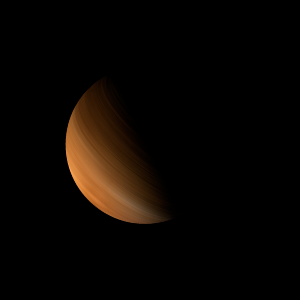|
|
Space Astro
|
Info for exoplanet "Misnoe"
| Scientific (actual) data |
|---|
| Name | HD 95338 b |
| Planet status | Confirmed |
| Planet mass | 0.12406 |
| Radius | 0.3551 |
| Orbital period | 55.086 |
| Semi major axis | 0.231 |
| Orbit eccentricity | 0.199 |
| Inclination | 89.35 |
| Discovered | 2020 |
| Updated | 2020-03-27 |
| Omega | 26.125 |
| Tzero tr | 2458590 |
| K | 8.15 |
| Temperature (kelvin) | 402 |
| Publication | Submitted to a professional journal |
| Detection type | Primary Transit |
| Mass measurement type | Radial Velocity |
| Radius measurement type | Primary Transit |
| Star name | HD 95338 |
| Right ascension | 164.86° |
| Declination | -56.62° |
| Mag v | 8.6 |
| Star distance | 36.9 |
| Star metallicity | 0.04 |
| Star mass | 0.76 |
| Star radius | 0.86 |
| Star sp type | K0.5V |
| Star age | 5.08 |
| Star temperature | 5212 |
| Wikipedia article | HD 95338 b |
Back
| |
| Fictional info (?) |
|---|
| Suggested name | Misnoe |
| Planet type | Small cold gas planet |
| Its orbital period around HD 95338 of 55 earth days is the shortest of all the planets in its solar system.
It is the coldest planetary atmosphere in its solar system, with a minimum temperature of 80°K (-193°C), and has a complex, layered cloud structure with ammonium hydrosulfide (NH4SH) thought to make up the lowest clouds, and ethane the uppermost layer of clouds.
troublesome journey. |
| Atmosphere | Ethane | 48% |
| Ammonium hydrosulfide (NH4SH) | 31% |
| Nitrogen | 18% |
| Argon | 2.7% |
| Hydrogen | 0.0011% |
| Atmospheric pressure | 25 bar |
 |
| No known satellites |
| Google search for Misnoe |
|
Website by Joachim Michaelis
|
|
|
|